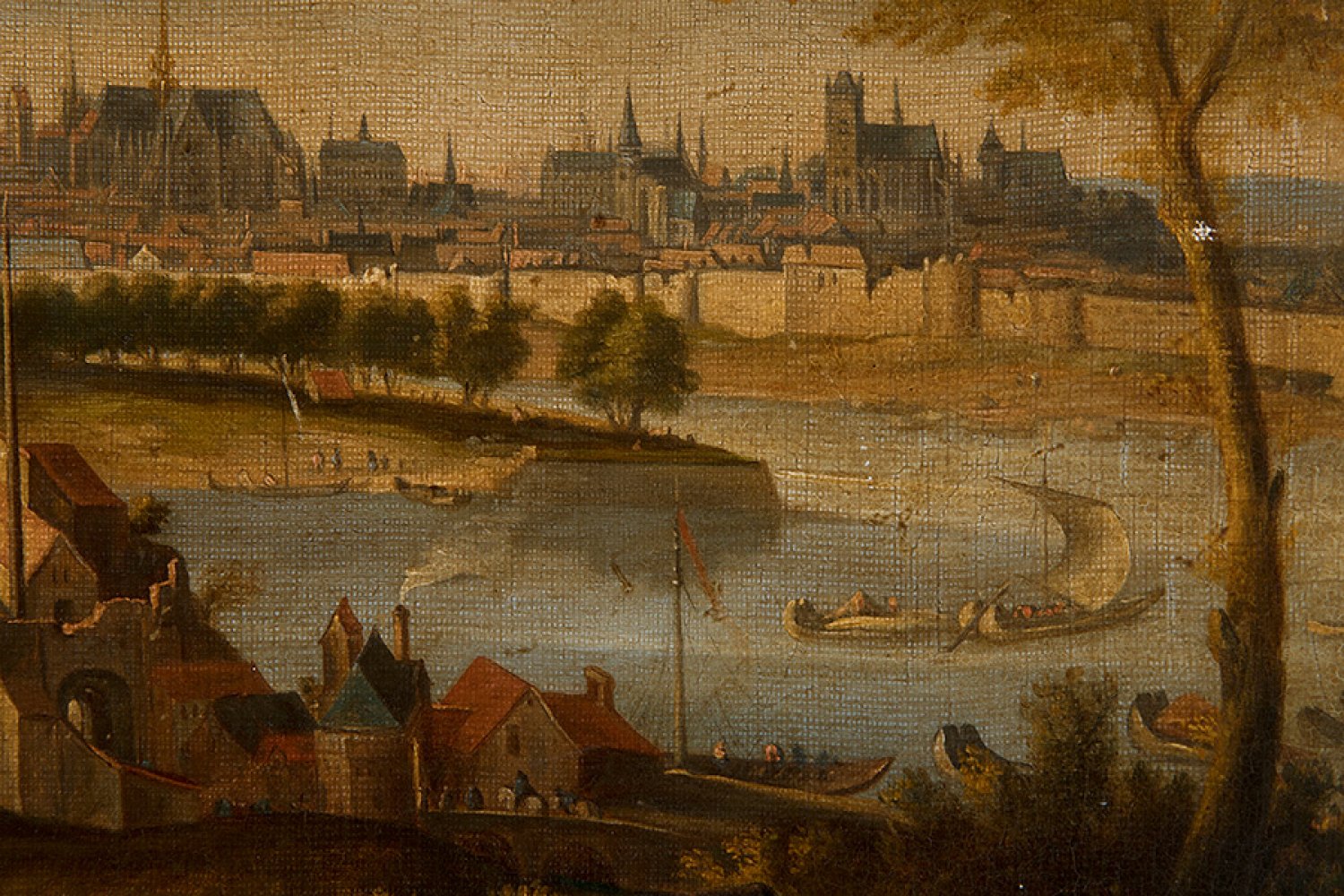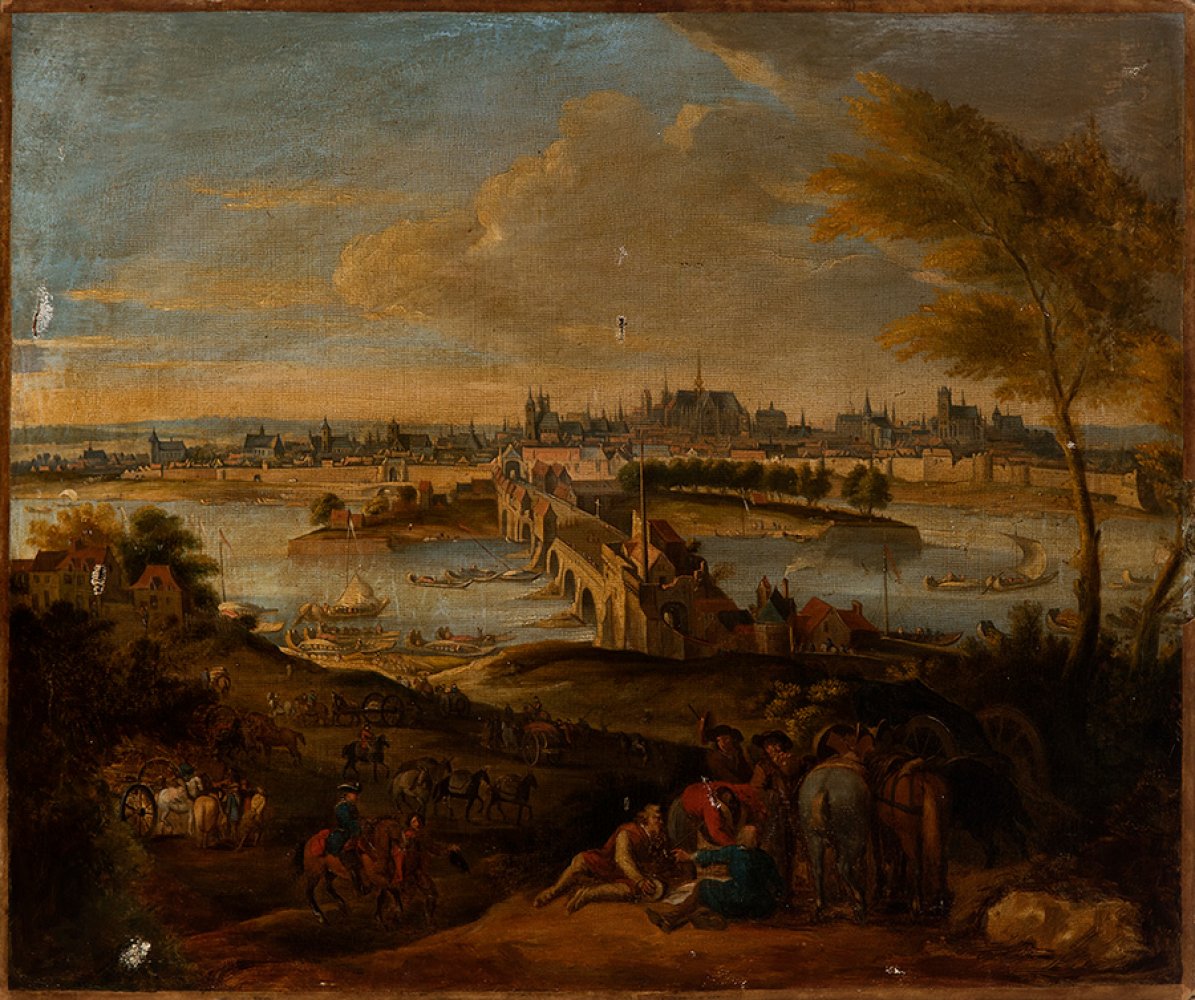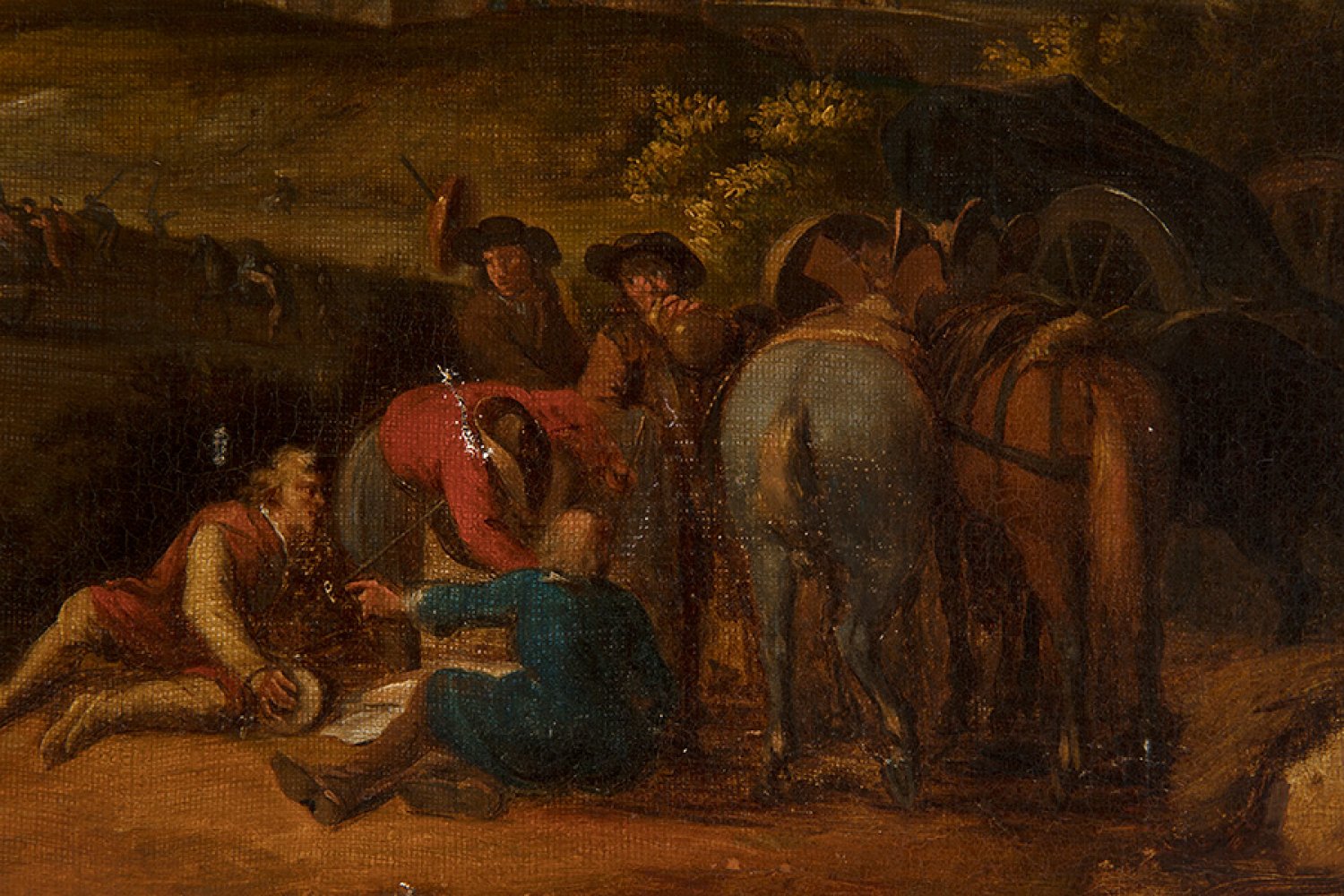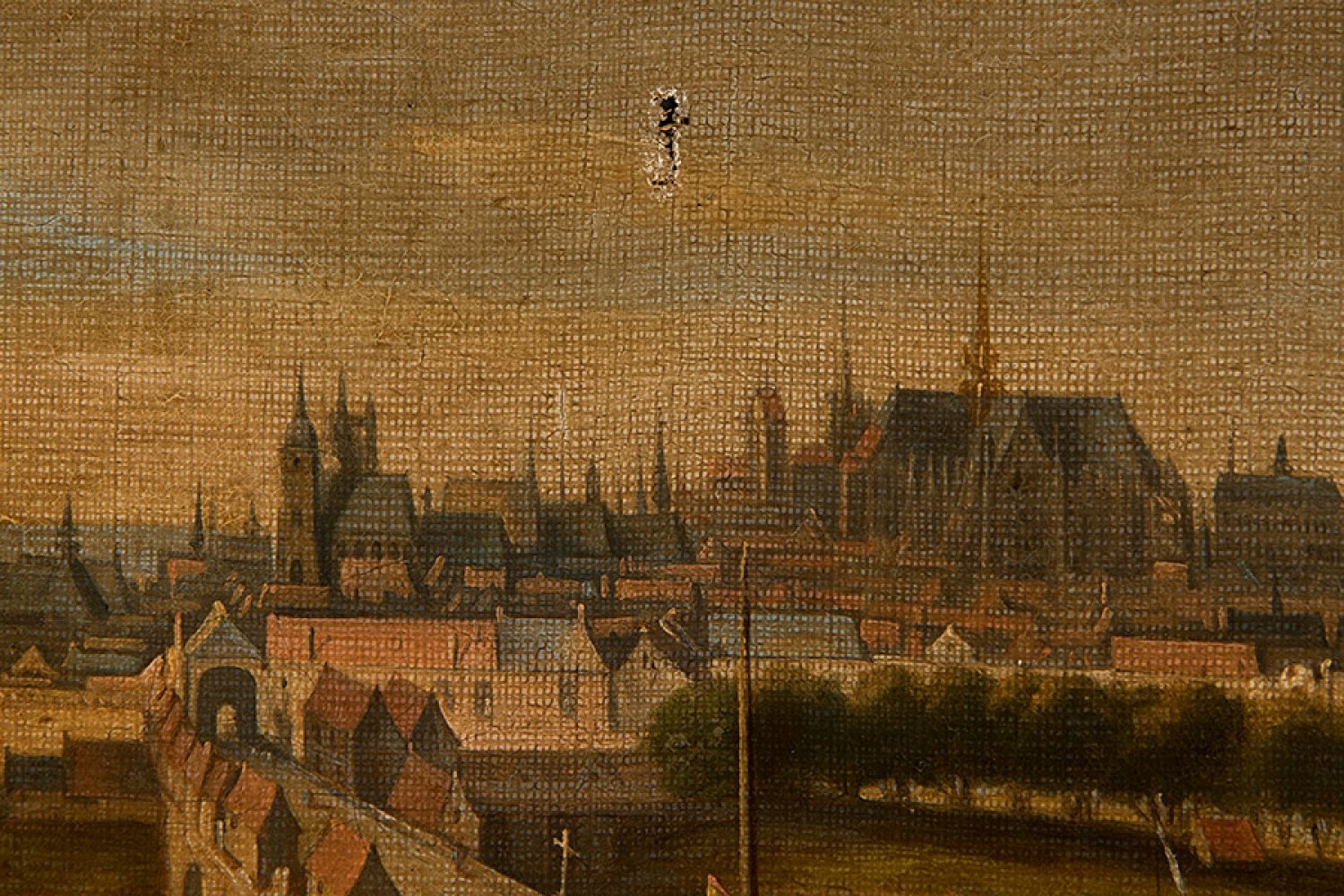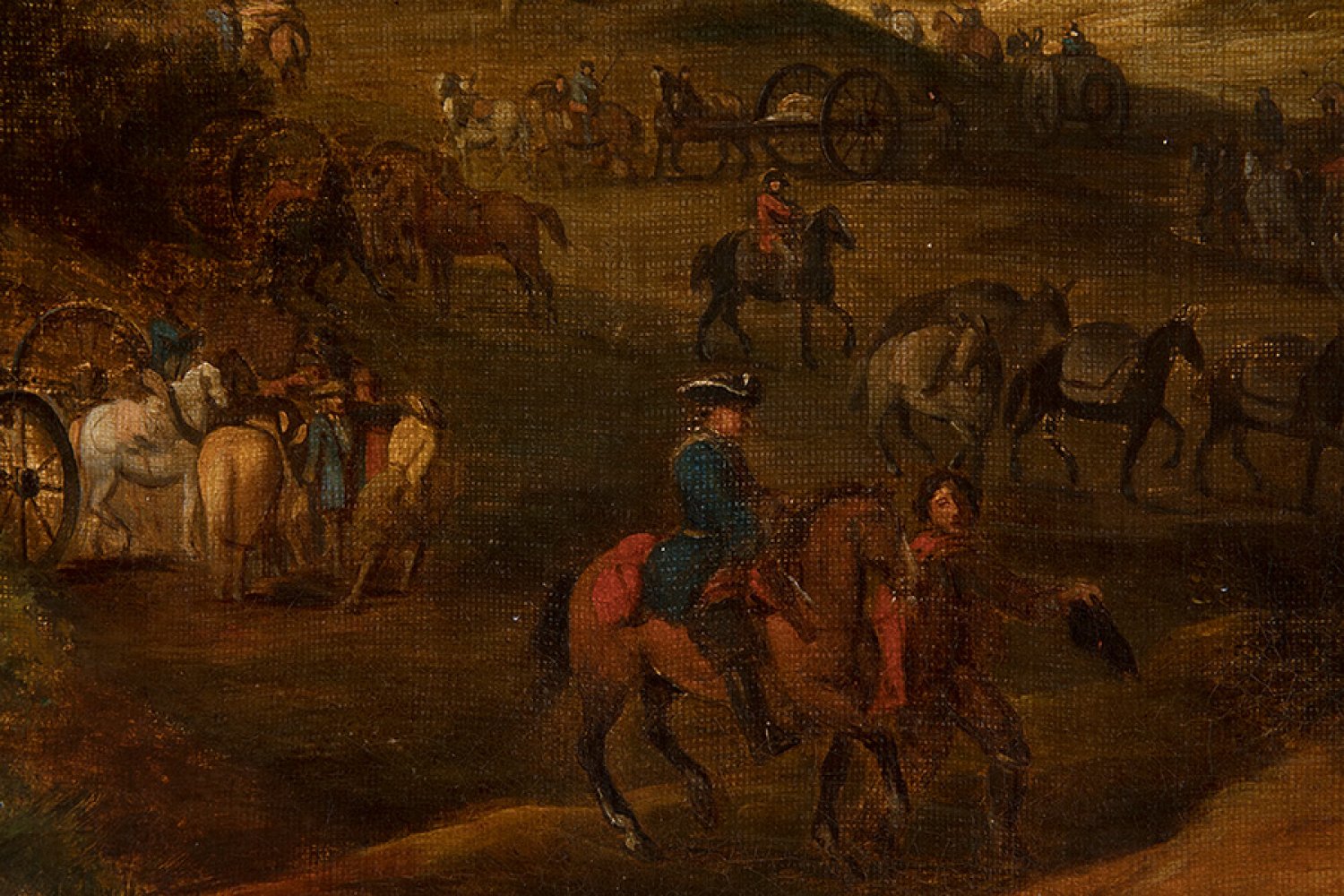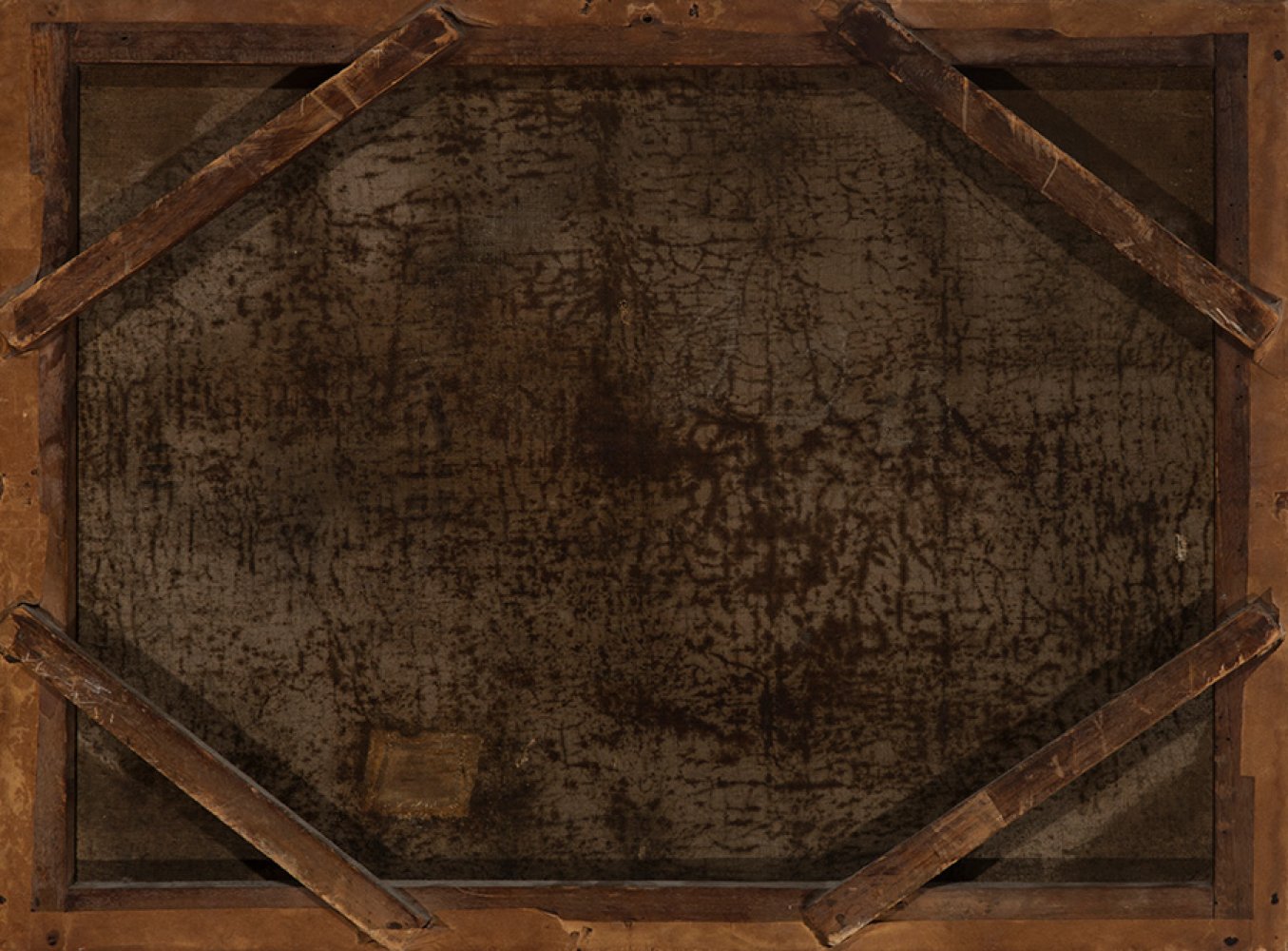31
19th century school, following 17th century Flemish models."City View".Oil on canvas.The canvas
1/7
Description
19th century school, following 17th century Flemish models.
"City View".
Oil on canvas.
The canvas has perforations and dirt. With patch on the back.
Measurements: 46 x 55,5 cm.
Although the dating of this canvas is fixed in the 19th century, the artist is clearly inspired by Flemish models of the 17th century. In it he gives priority to the landscape view of the last planes, in which the skyline of a typically Flemish city can be discerned. Like other genres that became very popular during the 17th and 18th centuries in Flanders, landscape painting has its roots in the Dutch pictorial tradition of the 15th century. The background landscapes in the religious works of Van Eyck, de Bouts and van der Goes occupy a much more important place as an artistic element in these works than landscape painting in Italian painting of the same period. With regard to the representation of the narrative, the landscape of the Flemish Primitives plays an essential role, not only as a natural setting for the characters but also to separate and set the various episodes of the story narrated in the work. With regard to the imitation of nature, 15th-century Flemish painters sought to depict the countryside and towns of their native country in their religious landscapes, detailing their flora with botanical precision and even giving an idea of the time of day and the season of the year in which the scene takes place. This special interest in depicting the landscape increased as the 16th century progressed, when a new type of landscape was developed and popularised for sacred scenes: the panoramic view. Very soon, however, it was the representation of the landscape itself that was to receive the attention of painters and, of course, of the public.
"City View".
Oil on canvas.
The canvas has perforations and dirt. With patch on the back.
Measurements: 46 x 55,5 cm.
Although the dating of this canvas is fixed in the 19th century, the artist is clearly inspired by Flemish models of the 17th century. In it he gives priority to the landscape view of the last planes, in which the skyline of a typically Flemish city can be discerned. Like other genres that became very popular during the 17th and 18th centuries in Flanders, landscape painting has its roots in the Dutch pictorial tradition of the 15th century. The background landscapes in the religious works of Van Eyck, de Bouts and van der Goes occupy a much more important place as an artistic element in these works than landscape painting in Italian painting of the same period. With regard to the representation of the narrative, the landscape of the Flemish Primitives plays an essential role, not only as a natural setting for the characters but also to separate and set the various episodes of the story narrated in the work. With regard to the imitation of nature, 15th-century Flemish painters sought to depict the countryside and towns of their native country in their religious landscapes, detailing their flora with botanical precision and even giving an idea of the time of day and the season of the year in which the scene takes place. This special interest in depicting the landscape increased as the 16th century progressed, when a new type of landscape was developed and popularised for sacred scenes: the panoramic view. Very soon, however, it was the representation of the landscape itself that was to receive the attention of painters and, of course, of the public.
Auction Details
Shipping
T&Cs & Important Info
Ask seller a question
19th century school, following 17th century Flemish models.
"City View".
Oil on canvas.
The canvas has perforations and dirt. With patch on the back.
Measurements: 46 x 55,5 cm.
Although the dating of this canvas is fixed in the 19th century, the artist is clearly inspired by Flemish models of the 17th century. In it he gives priority to the landscape view of the last planes, in which the skyline of a typically Flemish city can be discerned. Like other genres that became very popular during the 17th and 18th centuries in Flanders, landscape painting has its roots in the Dutch pictorial tradition of the 15th century. The background landscapes in the religious works of Van Eyck, de Bouts and van der Goes occupy a much more important place as an artistic element in these works than landscape painting in Italian painting of the same period. With regard to the representation of the narrative, the landscape of the Flemish Primitives plays an essential role, not only as a natural setting for the characters but also to separate and set the various episodes of the story narrated in the work. With regard to the imitation of nature, 15th-century Flemish painters sought to depict the countryside and towns of their native country in their religious landscapes, detailing their flora with botanical precision and even giving an idea of the time of day and the season of the year in which the scene takes place. This special interest in depicting the landscape increased as the 16th century progressed, when a new type of landscape was developed and popularised for sacred scenes: the panoramic view. Very soon, however, it was the representation of the landscape itself that was to receive the attention of painters and, of course, of the public.
"City View".
Oil on canvas.
The canvas has perforations and dirt. With patch on the back.
Measurements: 46 x 55,5 cm.
Although the dating of this canvas is fixed in the 19th century, the artist is clearly inspired by Flemish models of the 17th century. In it he gives priority to the landscape view of the last planes, in which the skyline of a typically Flemish city can be discerned. Like other genres that became very popular during the 17th and 18th centuries in Flanders, landscape painting has its roots in the Dutch pictorial tradition of the 15th century. The background landscapes in the religious works of Van Eyck, de Bouts and van der Goes occupy a much more important place as an artistic element in these works than landscape painting in Italian painting of the same period. With regard to the representation of the narrative, the landscape of the Flemish Primitives plays an essential role, not only as a natural setting for the characters but also to separate and set the various episodes of the story narrated in the work. With regard to the imitation of nature, 15th-century Flemish painters sought to depict the countryside and towns of their native country in their religious landscapes, detailing their flora with botanical precision and even giving an idea of the time of day and the season of the year in which the scene takes place. This special interest in depicting the landscape increased as the 16th century progressed, when a new type of landscape was developed and popularised for sacred scenes: the panoramic view. Very soon, however, it was the representation of the landscape itself that was to receive the attention of painters and, of course, of the public.
31st August -19th & 20th Century Arts
Sale Date(s)
Venue Address
Aragón 346, Barcelona
Calle Velázquez 7, Madrid
Carrer de Cirilo Amorós 55, Valencia
Barcelona
08009
Spain
General delivery information available from the auctioneer
Setdart offers Worldwide shipping
PICK UP IN ROOM: You can come and pick up your lots in our offices (Barcelona, Madrid or Valencia). At the moment of the withdrawal, you will be able to accept the current conditions of the lot by means of a document that you will sign.
YOU CAN SEND ANOTHER PERSON TO PICK UP: This person must present a signed authorization that you can find in our web page by accessing from BUY AT SETDART- LOGISTICS-DOWNLOAD AUTHORIZATION DOCUMENT. You can also send an e-mail with the requested data in AUTHORIZATION DOCUMENT to admin@setdart.com
Important Information
25% buyer´s premium
21% buyer´s premium at www.setdart.com
















